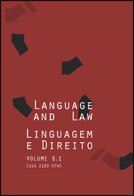The development of legal procedures for using a transcript to assist the jury in understanding indistinct covert recordings used as evidence in Australian criminal trials
A history in three key cases
Abstract
The use of police transcripts to assist a jury in determining the content of indistinct forensic audio is a cause of concern to many in forensic linguistics. A common recommendation is that the law should make more use of transcripts produced by experts in linguistic science. While this can help in individual cases, it is not a general solution. In fact, it can make things worse instead of better. That is because it fails to take account of legal procedures which are little known in forensic linguistics, and the misconceptions about language that they embody. Previous papers have set out some of the relevant procedures as they currently stand. The present article oers a historical perspective, tracing the development of current procedures, and their misconceptions about language, through three key cases of
the 1980s and 1990s which stand as authoritative precedents for Australian legal practice regarding the problematic use of police (and expert) transcripts as assistance in court. The conclusion outlines the solution being pursued by Australian linguists.
Downloads
Published
How to Cite
Issue
Section
License
Copyright (c) 2021 Helen Fraser

This work is licensed under a Creative Commons Attribution-NonCommercial 4.0 International License.
Este trabalho está licenciado com uma Licença Creative Commons - Atribuição-NãoComercial 4.0 Internacional.






